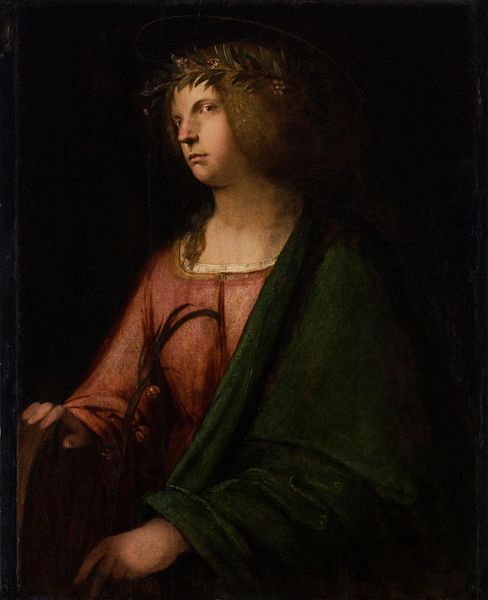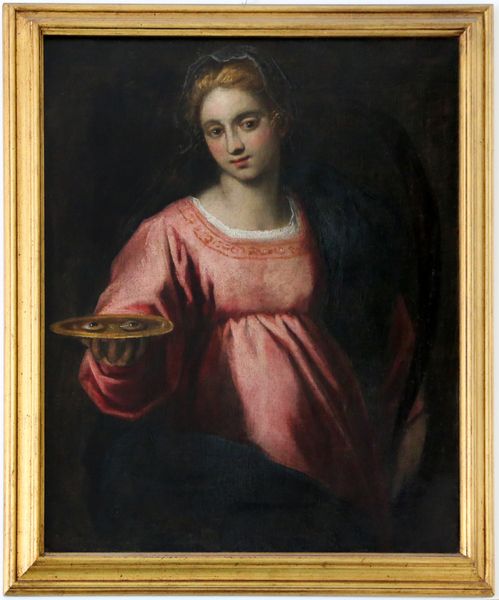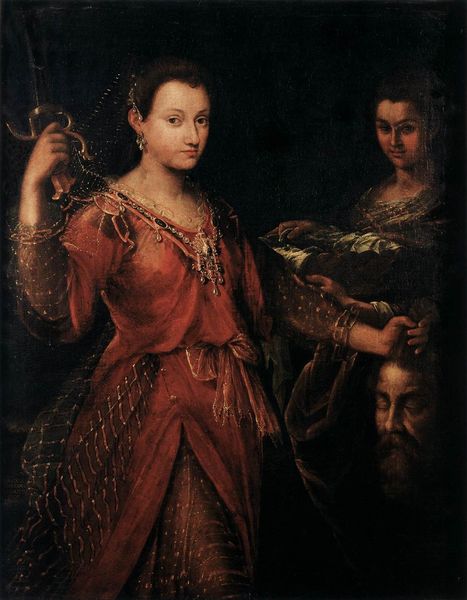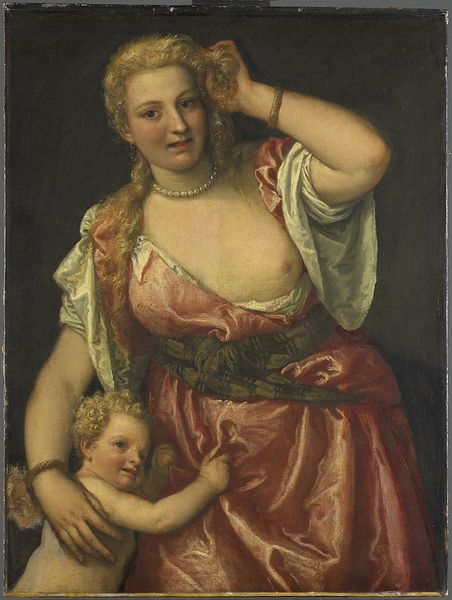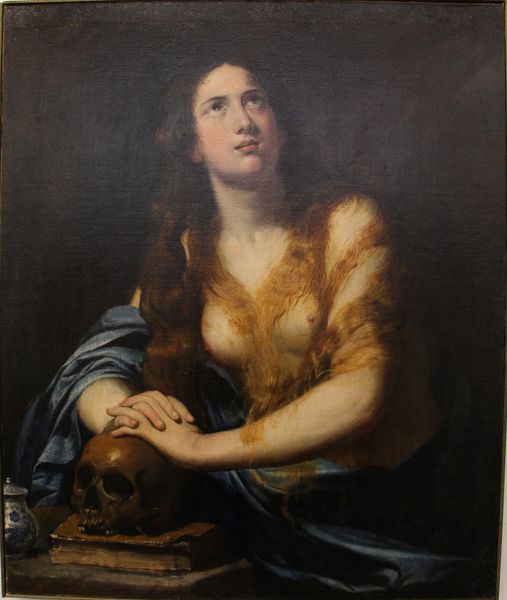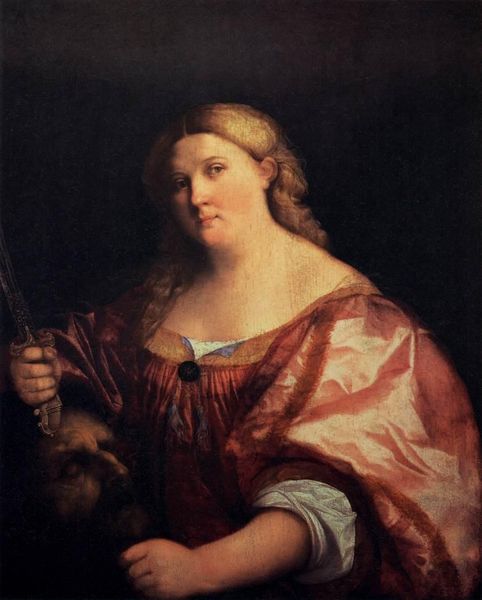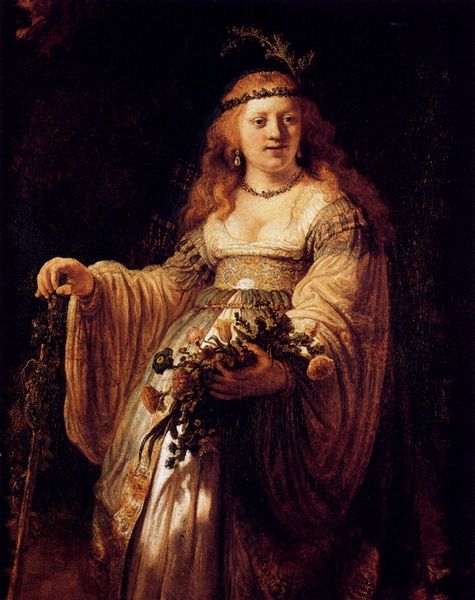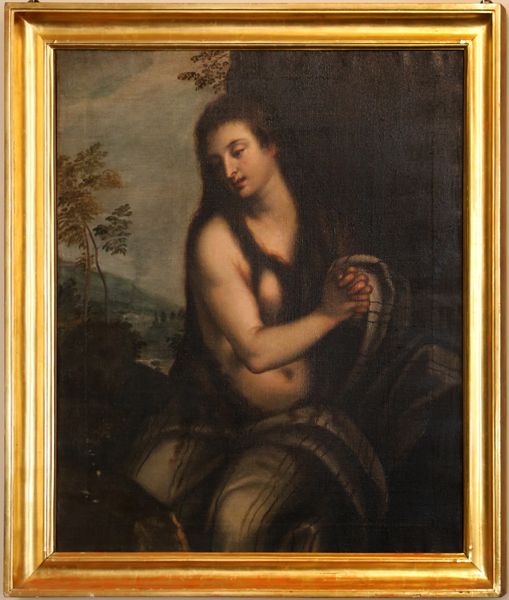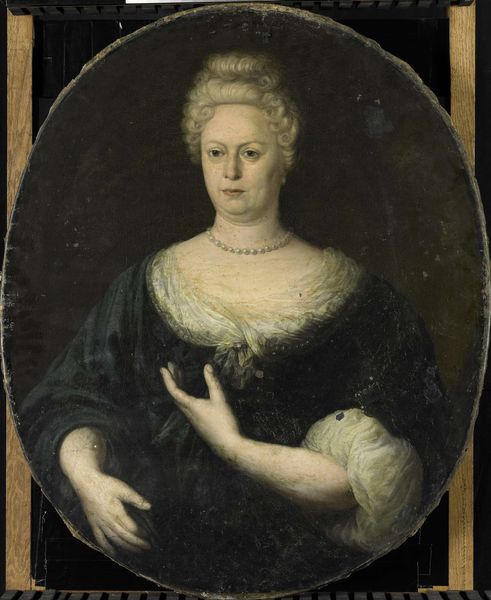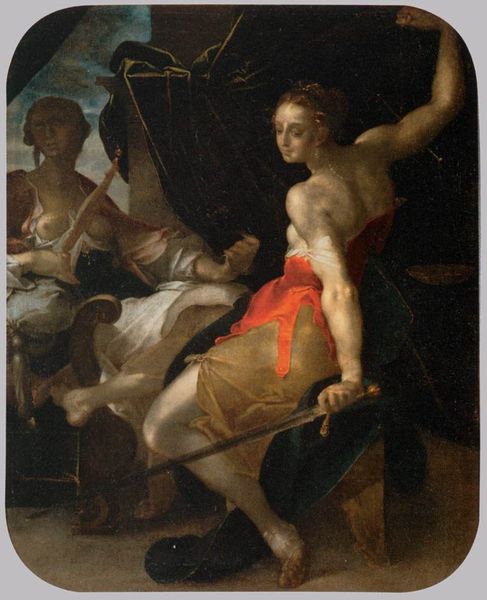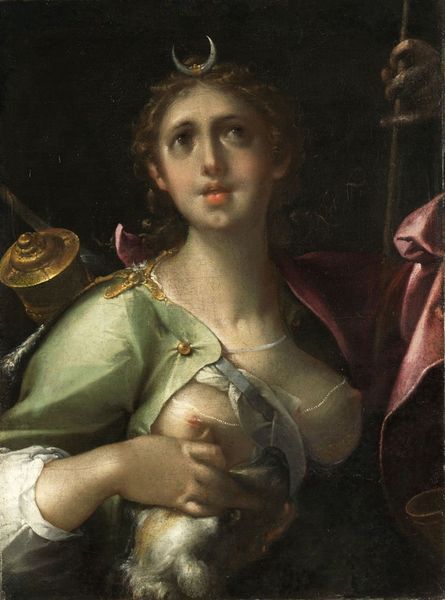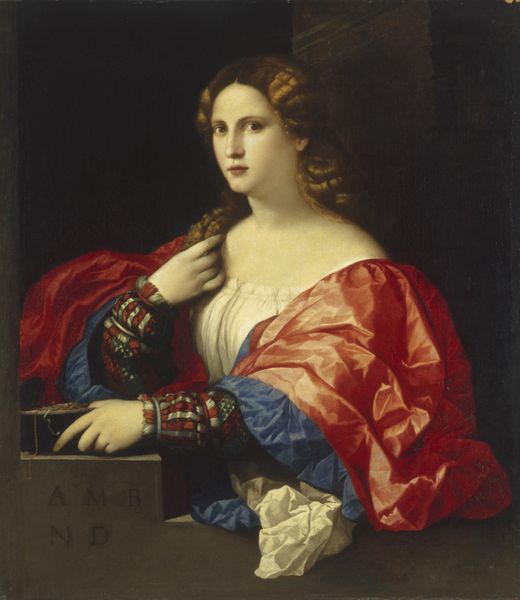
oil-paint
#
portrait
#
baroque
#
oil-paint
#
oil painting
#
history-painting
#
italian-renaissance
#
portrait art
Copyright: Public domain
Curator: This portrait—Palma il Giovane's "Santa Maria Maddalena" from 1628, rendered in oil—feels overwhelmingly sorrowful. Editor: Yes, there's a distinct melancholic atmosphere. It's Baroque in its drama, yet restrained. Note how Maddalena's gaze is averted; her eyes tell a story of interiority, not direct engagement. Curator: And the way she's clutching what seems to be a discarded piece of jewelry—almost a signifier of worldly possessions abandoned for something deeper. It speaks of vulnerability, of something relinquished. It also lends the artwork its power, as Maddalena's inner world feels much richer than all worldly goods represented on the right. Editor: The representation of Maddalena—the repentant sinner—must be read alongside contemporary perspectives on female identity. What does it mean to paint a woman defined by her remorse? I mean, history-painting—was she really granted interiority, or were her tears yet another tool to regulate female virtue? Curator: Perhaps a bit of both? There’s undeniable emotion there. The contrast of her delicate, almost fragile hand against the sumptuous folds of her robe—it whispers of conflicting desires. This moment right before… transformation. That precise instant—so ripe with creative energy, and spiritual potential! Editor: Right, or ripe with didactic intent—a moral lesson cloaked in alluring imagery. Still, there’s a captivating tension at play, an invitation to deconstruct not just a painting but also the societal norms it upholds. Curator: It invites us to wrestle with complexity. An individual finding faith through her experience and emotion; how fascinating that, centuries later, we get to explore it with fresh eyes and updated world views! Editor: Precisely. Even the most seemingly straightforward depictions hold endless layers of interpretation, ever-shifting with the currents of our present.
Comments
No comments
Be the first to comment and join the conversation on the ultimate creative platform.
